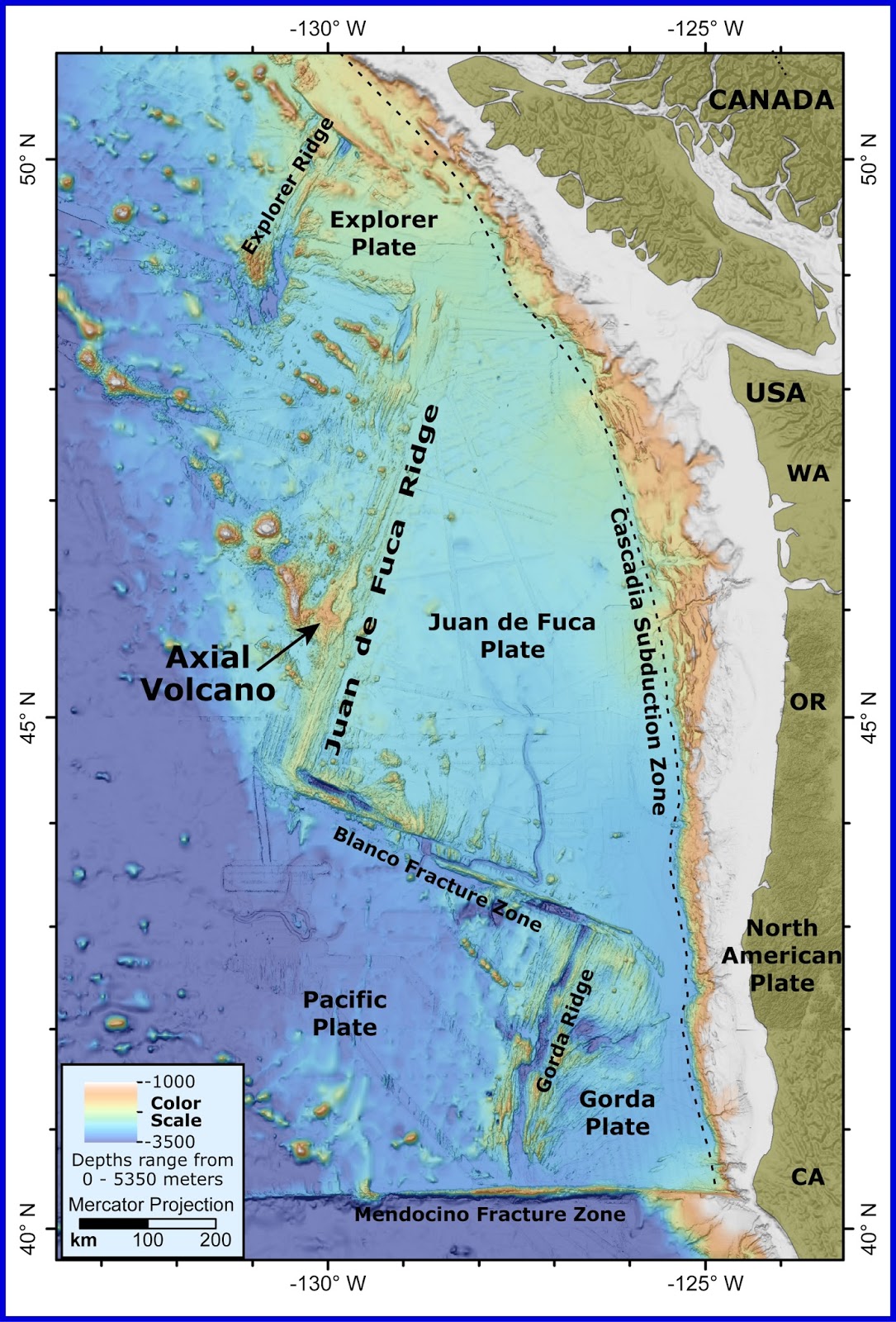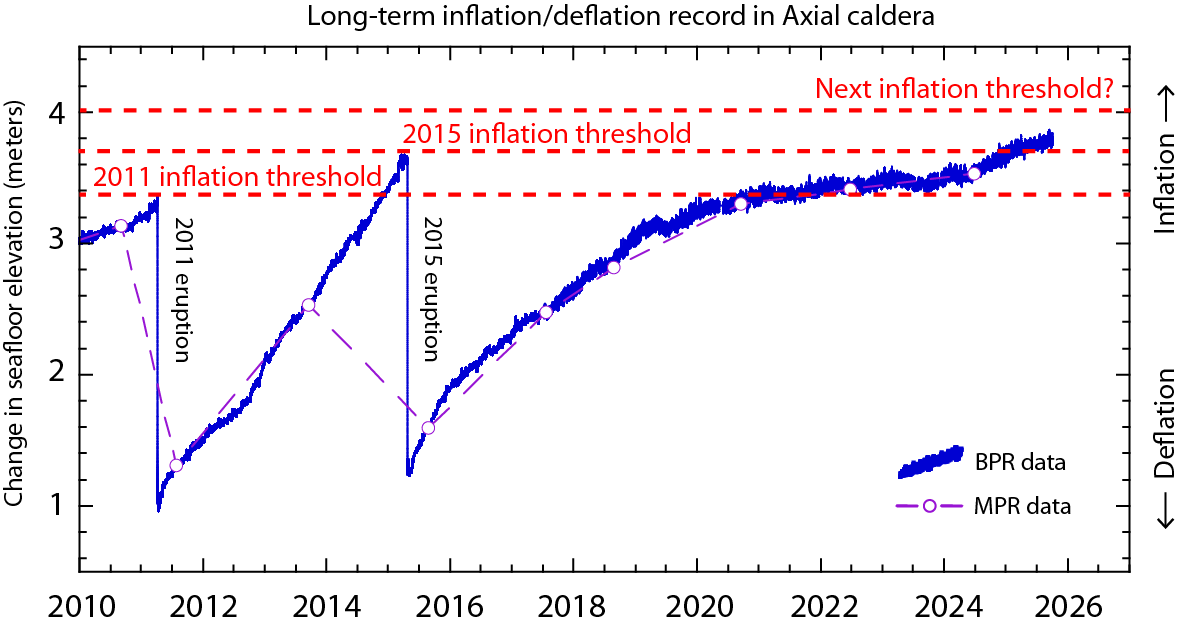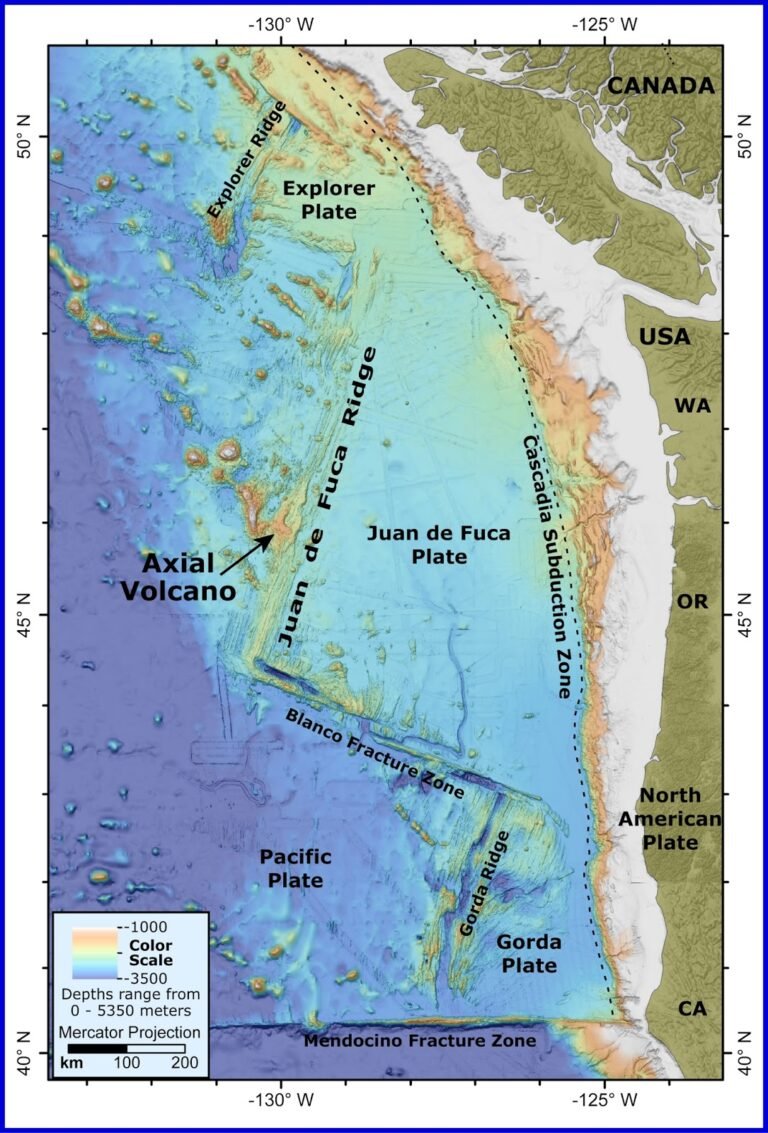An underwater volcano off the coast of Oregon could now blow its top in mid-to late-2026, scientists say.
In December last year, scientists said the Axial Seamount was nearing the threshold seen before an eruption a decade earlier and could erupt within a year. Now, they predict the eruption will likely come later than previously expected, in mid-to-late 2026.
“After successfully forecasting the 2015 eruption at Axial, we’ve been attempting to forecast the next since then,” Bill Chadwick, a professor of geology and geophysics at Oregon State University who co-runs a blog about the seamount, told Live Science in an email.
In a presentation to the American Geophysical Union in December 2024, Chadwick and colleagues said that eruptions at Axial Seamount follow a period of high seismicity and steady ground inflation caused by magma rising below the seafloor. The last three eruptions happened at similar — though slightly increasing — levels of inflation, so the volcano would likely erupt again once it reached or exceeded this threshold, they argued.
Following the 2015 eruption, inflation below the seamount started to build again. But the inflation rate gradually declined through 2023, and “by the summer of 2023 the uplift rate was nearly zero,” Chadwick noted in the presentation abstract, which he wrote in July 2024.
Then, in the fall of 2023, rates of inflation and seismicity picked up again, indicating “a fundamental change in the magma supply to the volcano,” Chadwick wrote in the abstract. “Based on the current trends, and the assumption that Axial will be primed to erupt when it reaches the 2015 inflation threshold, our current eruption forecast window is between now (July 2024) and the end of 2025,” he wrote.
By late 2024, Axial had reached 95% of the inflation level that preceded the eruption in 2015.
But by late April 2025, inflation rates had slowed again, and on Oct. 27, Chadwick updated the Axial Blog to say that it was time to revisit the December 2024 forecast. “It will take a bit more time than we anticipated to reach the same inflation threshold that the volcano reached before the last eruption,” he wrote. “At the current rate of inflation, we won’t get to that higher inflation threshold until mid-to-late 2026.”

Axial Seamount behaves similarly to Iceland’s Krafla volcano, where the amount of inflation needed for an eruption increases slightly with each eruption, Chadwick told Live Science. The inflation threshold in 2015 was about 12 inches (30 centimeters) higher than it had been in 2011, so scientists assume that a similar increase in uplift will be observed now before another eruption occurs, he said.
Currently, the ground is 4 inches (10 cm) higher than it was minutes before the 2015 eruption, with potentially another 8 inches (20 cm) to go before the next eruption. “It’s really just an educated guess, but also based on the previous behavior of volcanoes like Krafla,” Chadwick said.

The reason for this increase in inflation with each eruption may be that magma rising to the surface compresses the surrounding crust, making it harder for magma to rise again in the same spot years later, Chadwick said. But inflation thresholds won’t increase indefinitely, because the Juan de Fuca Ridge releases compressive stress in the crust as it spreads, he added.
Inflation rates and thresholds are unpredictable, which makes estimating the timing of an eruption difficult. “The forecasting attempts described in the Blog are based on simple pattern recognition in past monitoring and speculation about how that might play out in the future,” Chadwick said.
However, a new wave of physics-based models could make the process easier: One model that Chadwick and colleagues have been working on can use previous monitoring data to accurately predict past eruptions, he said.
Starting this week (Nov. 10), the researchers will use this model to analyze real-time data from Axial Seamount and attempt to predict its next eruption, Chadwick said. The results won’t be released until after the next eruption, as only that can demonstrate the success or failure of the model, he noted.


